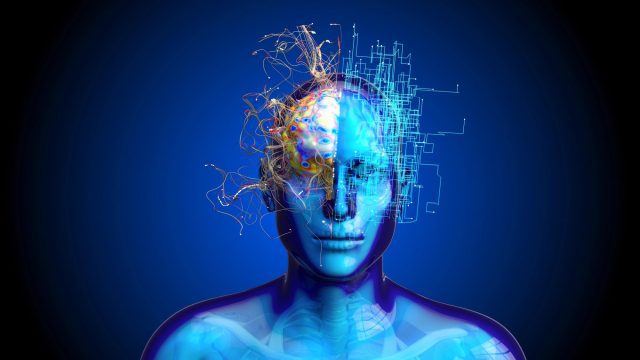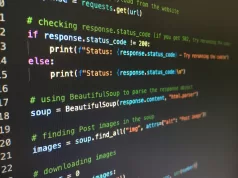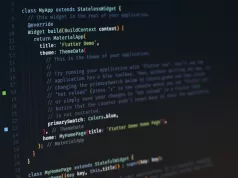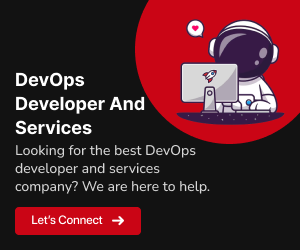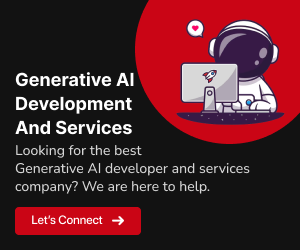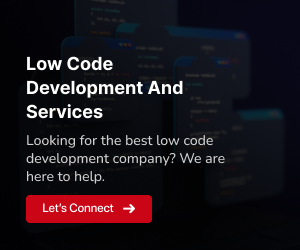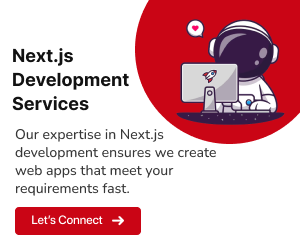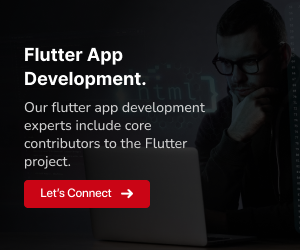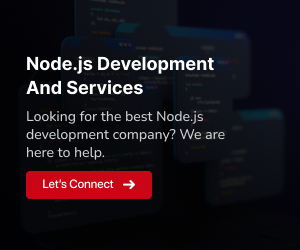Discover the transformative role of AI and machine learning in Flutter app development in the USA. Explore the fusion of innovation and technology shaping the landscape.
Embracing the Future: Unveiling the Influence of AI and Machine Learning on Flutter App Development in the USA
In the ever-evolving landscape of technology, AI and machine learning have emerged as transformative forces, reshaping the way we interact with digital experiences. Amidst this wave of innovation, the realm of Flutter app development stands at the forefront of change, ushering in a new era of possibilities. This blog delves into the dynamic synergy between AI, machine learning, and Flutter in the USA, uncovering how these cutting-edge technologies are redefining app creation, user engagement, and the very fabric of the digital journey. As the lines between human and machine continue to blur, join us on a captivating exploration of the profound impact that AI and machine learning are forging within the vibrant landscape of Flutter app development in the USA.
For insights into finding the ideal fit when hiring dedicated Flutter developers in the USA, don’t miss our informative blog: Finding the Perfect Fit: Hiring Dedicated Flutter Developers in the USA
AI and Machine Learning: Pioneering Progress in Flutter App Development
In the dynamic realm of Flutter app development, the fusion of Artificial Intelligence (AI) and Machine Learning (ML) emerges as a groundbreaking catalyst, reshaping the landscape and propelling innovation to unprecedented heights. At its core, AI refers to the simulation of human intelligence in machines, enabling them to mimic human-like cognition, decision-making, and problem-solving. Machine Learning, a subset of AI, equips machines with the ability to learn from data patterns and improve their performance over time without explicit programming.
The symbiotic partnership between AI and ML is transforming the traditional paradigms of app creation. This section unveils the remarkable potential of AI and ML in the context of Flutter app development, offering a glimpse into their transformative power and their intricate interplay with the creative process. By understanding the underlying concepts, developers in the USA can harness the true capabilities of these technologies to craft apps that are intelligent, intuitive, and adaptive.
Empowering Apps with Intelligent Insights: The AI Advantage
AI brings a remarkable shift in how apps interact with users and process information. It empowers apps to comprehend user behavior, anticipate preferences, and provide tailored experiences. Through Natural Language Processing (NLP), AI enables apps to understand and respond to user inputs, fostering seamless communication and engagement. Furthermore, Computer Vision capabilities allow apps to interpret visual data, opening avenues for augmented reality experiences and image recognition.
Mastering the Art of Learning: Machine Learning’s Impact
Machine Learning complements AI by enabling apps to learn and adapt autonomously. By analyzing vast amounts of data, ML algorithms uncover patterns, correlations, and trends that might go unnoticed through conventional programming. This empowers apps to refine their performance, enhance recommendations, and adapt to changing user preferences. As ML models evolve and refine over time, apps become more accurate, efficient, and effective in meeting user needs.
Envisioning the Future: AI, ML, and Flutter App Development in the USA
The integration of AI and ML into Flutter app development signifies an era of innovation. In the USA, where technological advancement thrives, this dynamic duo reshapes industries and user experiences alike. As Flutter developers embrace AI and ML, they unlock the potential to create apps that transcend traditional boundaries. These technologies lay the foundation for intelligent apps that anticipate needs, adapt to user preferences, and revolutionize the very fabric of the digital landscape. As the journey into AI and ML continues, the possibilities for groundbreaking apps in the USA and beyond are limitless.
Implementing AI and ML in Flutter: Diverse Avenues of Innovation
The integration of Artificial Intelligence (AI) and Machine Learning (ML) into Flutter app development opens a world of innovative possibilities. This section unveils diverse ways through which developers in the USA can implement AI and ML using various libraries and tools, creating apps that are intelligent, responsive, and capable of providing personalized experiences. From predictive analytics to natural language processing, each avenue presents an opportunity to elevate app functionality and user engagement.
Predictive Analytics with TensorFlow Lite
Leveraging the power of TensorFlow Lite, developers can implement predictive analytics to harness historical user data and anticipate preferences. This enables apps to offer tailored content recommendations, product suggestions, and dynamic pricing strategies based on individual user patterns. TensorFlow Lite’s machine learning models can be trained to provide accurate predictions that enhance user experiences and drive conversions.
Conversational AI with Dialogflow
Integrating Google’s Dialogflow library empowers apps to understand and respond to human language, creating meaningful conversations. Chatbots and virtual assistants become more intuitive, providing instant support, answering queries, and offering personalized recommendations. By training the AI model with natural language interactions, Dialogflow ensures a seamless and engaging conversational experience.
Image and Video Recognition with Firebase ML Kit
Implementing Firebase ML Kit enables apps to interpret visual data, opening possibilities for augmented reality (AR) experiences, object recognition, and content categorization. The library offers image labeling, text recognition, and face detection capabilities, allowing developers to create apps that interact with the physical world through AI-driven visual processing.
Anomaly Detection with Scikit-learn
Scikit-learn, a popular machine learning library, can be employed for anomaly detection, identifying unusual patterns within app interactions. Developers can analyze user activities, financial transactions, or account behaviors to identify potential threats and anomalies. By using Scikit-learn’s algorithms, apps can enhance security and protect user data from fraudulent activities.
Adaptive User Interfaces with Reinforce
Flutter’s Reinforce library enables the creation of adaptive user interfaces that evolve based on user interactions. By implementing reinforcement learning, developers can build apps with interfaces that learn and adapt to individual user preferences. The library provides tools to optimize layouts, enhance user interactions, and offer a personalized experience.
Sentiment Analysis with TextBlob
Integrating the TextBlob library allows apps to decipher user emotions from text inputs, reviews, or social media interactions. By analyzing sentiment, developers gain insights into user reactions and can adapt app features or content accordingly. TextBlob’s natural language processing capabilities facilitate a deeper understanding of user sentiments.
Enhanced Data-driven Decision Making with Pandas and Matplotlib
For data-driven decisions, developers can utilize Python libraries like Pandas and Matplotlib to analyze user behavior, preferences, and performance metrics. These libraries enable data manipulation, visualization, and analysis, allowing developers to uncover insights that guide app improvement, feature development, and resource allocation.
In the realm of Flutter app development in the USA, the fusion of AI and ML with these libraries signifies a transformative journey toward innovative applications. Each avenue, backed by powerful tools, offers developers an opportunity to enhance user experiences, streamline operations, and redefine what’s achievable within the digital landscape. As the convergence of technology and creativity continues to shape the app development landscape, embracing AI and ML libraries opens doors to a world of limitless possibilities.
Read more: The Future of Flutter App Development in the USA
Unveiling the Potential: AI and ML’s Features and Benefits in Flutter App Development
Integrating the prowess of Artificial Intelligence (AI) and Machine Learning (ML) into the tapestry of Flutter app development introduces an array of features and advantages that redefine how applications are envisioned, crafted, and embraced. From intuitive interactions to heightened decision-making capabilities, these technologies propel USA’s app development sphere into a new epoch. In this section, we delve into the unique attributes and unmatched benefits that AI and ML bestow upon Flutter developers.
Personalization Redefined: Tailored Experiences
AI and ML empower apps to decipher user behavior, preferences, and habits, enabling the delivery of personalized content and recommendations. This dynamic personalization ensures that each user’s journey is distinctive, culminating in increased engagement, satisfaction, and ultimately, elevated user retention rates. Apps can adeptly adapt to individual proclivities, making interactions more intuitive and pertinent.
Decoding Future Actions: Predictive Analytics
Harnessing predictive analytics, developers gain the ability to anticipate user actions and behaviors, grounded in historical data patterns. This equips apps to make well-informed decisions, such as suggesting products, services, or content in harmony with user preferences. Predictive models furnish invaluable insights that steer marketing strategies, enrich user experiences, and drive conversions.
Efficiency Amplified: Resource Allocation
ML algorithms empower apps to optimize resource allocation through the analysis of data patterns and user tendencies. From adroitly managing server resources to offering pertinent content, ML-infused apps allocate resources judiciously, ushering in heightened performance, cost reductions, and amplified user gratification.
Security Fortified: Detecting Anomalies
AI-driven anomaly detection fortifies app security by detecting unusual behaviors or patterns that could denote fraud or security breaches. Whether safeguarding financial transactions or bolstering user accounts, these features foster user trust and confidence, creating a secure and dependable app ecosystem.
Adaptation in Action: User Interfaces
Interfaces imbued with Reinforcement Learning dynamically adapt according to user interactions. This functionality optimizes app layout, presentation, and interactions, ensuring that the user journey remains seamless and intuitive. Adaptive interfaces amplify user participation and contentment by catering to personal inclinations.
Swift Insights, Effective Utilization
AI and ML facilitate swift and precise analysis of extensive datasets. This data-centric approach unveils priceless insights into user actions, trends, and performance metrics. Developers leverage these insights for well-informed decisions on feature enhancements, content strategies, and holistic app refinement.
Evolving for Excellence: Continuous Learning
ML models embrace a perpetually evolving learning curve, adjusting to user interactions and feedback. This imparts apps with a progressive trajectory, refining accuracy, relevance, and user-friendliness over time. Continuous learning ensures apps remain current and in sync with user expectations.
Nurturing Innovation: Igniting Creativity
AI and ML introduce novel avenues for innovation, empowering developers to experiment with distinctive features, functionalities, and experiences. These technologies foster creativity by inspiring the exploration of uncharted territories, ushering in distinctive capabilities, and reshaping app boundaries.
Informed Choices, Elevated Engagement
Insights garnered from AI and ML expedite decision-making processes. Developers base their choices on data-driven insights, resulting in swifter and more informed decisions. This efficiency cascades into enhanced user experiences and heightened engagement.
In the dynamic tapestry of USA’s Flutter app development, the assimilation of AI and ML unfurls a transformative epoch. The distinctive traits and advantages inherent in these technologies empower developers to sculpt intelligent, user-centric applications that resonate with the evolving needs of modern users. As AI and ML continue to redefine the contours of app development, their impact emerges as a beacon heralding the dawn of a new era in digital experiences.
Forging New Frontiers: The Evolution of AI and ML in Flutter App Development
In the dynamic landscape of Flutter app development, the synergy of Artificial Intelligence (AI) and Machine Learning (ML) emerges as a transformative force. This journey through innovation unfolds the profound impact of AI and ML, reshaping user experiences and elevating business operations in the USA. Let’s explore how AI and ML are redefining app development and paving the way for a future where intelligent interactions are the norm.
Exploring Predictive Insights
Predictive insights powered by AI and ML technologies bring apps to life with adaptive interfaces and personalized experiences. Through tools like TensorFlow Lite and Firebase ML Kit, developers enable conversations with apps, predict user preferences, and interpret visual cues. This not only enhances user engagement but also sets the stage for apps that learn and evolve alongside their users.
Data-Driven Creativity
The fusion of AI and ML equips developers with tools like Scikit-learn, TextBlob, and Pandas, enabling the decoding of sentiments, anomaly detection, and data-driven decision-making. By harnessing these capabilities, app developers transcend traditional boundaries and create applications that not only function but also understand user behavior on a deeper level.
From Utilities to Intelligent Companions
As AI and ML become woven into the fabric of app development, applications evolve from mere utilities to intelligent companions. These technologies empower developers to craft apps that not only serve functional purposes but also adapt, learn, and predict user needs. This transformative shift aligns apps with user expectations in an era driven by personalization.
Shaping the Future
The journey into AI and ML in Flutter app development is an exploration of revolutionary potential. As we bid farewell to this chapter, the impact of AI and ML on the future of app development in the USA is undeniable. With each breakthrough, the possibilities expand, leading us to a future where technology is not just a tool, but a conduit for creating deeply intelligent and engaging experiences.
In conclusion, AI and ML are catalysts of transformation that redefine the app development landscape. The story of their integration has only just begun, promising exciting frontiers for developers and users alike. The future of Flutter app development is bright, shaped by the fusion of these technologies and the boundless creativity they inspire.
Unveiling AI and ML in Flutter: Addressing Common Queries
Q1: What are AI and ML, and how do they impact Flutter app development?
A1: AI (Artificial Intelligence) refers to machines performing tasks that require human-like intelligence, while ML (Machine Learning) involves algorithms learning from data to make predictions. In Flutter app development, AI and ML enable apps to learn, adapt, and provide personalized experiences by analyzing user behaviors and patterns.
Q2: What benefits do AI and ML bring to Flutter app development?
A2: AI and ML enhance user experiences by tailoring content, predicting user preferences, and automating processes. They optimize resource allocation, improve security through anomaly detection, and open opportunities for innovation, making apps more engaging and efficient.
Q3: Are AI and ML suitable for all types of Flutter apps?
A3: Yes, AI and ML can enhance various types of apps, from e-commerce to social media and utility apps. The versatility of these technologies allows developers to integrate them to provide value-added features and intelligent interactions.
Q4: What are some practical use cases for AI and ML in Flutter apps?
A4: Practical use cases include personalized content recommendations, chatbots for customer support, image and speech recognition, predictive analytics for user behavior, and even adaptive user interfaces that evolve based on user interactions.
Q5: Do I need to be an AI/ML expert to implement these technologies?
A5: While a basic understanding of AI and ML concepts is helpful, many libraries and tools offer user-friendly interfaces and documentation. Developers can start with simple implementations and gradually explore more advanced features as they become familiar with the technologies.
Q6: Are there any ethical considerations when using AI and ML in apps?
A6: Yes, ethical considerations include ensuring user data privacy, avoiding bias in algorithms, and transparently informing users about AI-driven interactions. Adhering to ethical guidelines helps build trust with users and avoids unintended consequences.
Q7: Are there any limitations or challenges in using AI and ML in Flutter apps?
A7: Challenges include the need for quality training data, potential overreliance on predictions, and ensuring that AI and ML algorithms align with the app’s goals. The learning curve for implementing certain features may also require some investment of time and effort.
Q8: How can I get started with implementing AI and ML in my Flutter app?
A8: Begin by identifying areas where AI and ML can enhance user experiences or automate tasks. Explore libraries like TensorFlow Lite, Dialogflow, and Firebase ML Kit for specific functionalities. Online tutorials, documentation, and community forums can provide valuable resources for learning and implementation.
Q9: Can AI and ML be used for real-time interactions in Flutter apps?
A9: Certainly! AI and ML can be integrated to enable various real-time interactions. For instance, chatbots can respond to user queries effectively. Recommendation engines can suggest relevant content based on user preferences. Additionally, adaptive interfaces can adjust dynamically as users interact with the app. This integration enhances user experiences and engagement significantly.
Q10: How will AI and ML continue to shape the future of Flutter app development?
A10: AI and ML are poised to be integral components of future app development, driving innovations in user engagement, predictive features, and automation. As these technologies evolve, developers can expect more user-centric and intelligent app experiences that adapt to individual preferences and behaviors.




